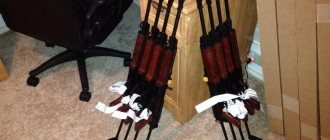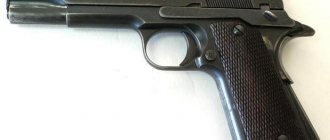1. Production for the purpose of sale of counterfeit bank notes of the Central Bank of the Russian Federation, metal coins, government securities or other securities in the currency of the Russian Federation or foreign currency or securities in foreign currency, as well as storage, transportation for the purpose of sale and sale of obviously counterfeit bank notes of the Central Bank of the Russian Federation, metal coins, government securities or other securities in the currency of the Russian Federation or foreign currency or securities in foreign currency -
shall be punishable by forced labor for a term of up to five years, or imprisonment for a term of up to eight years, with or without a fine in the amount of up to one million rubles or in the amount of the wages or other income of the convicted person for a period of up to five years.
2. The same acts committed on a large scale -
shall be punishable by imprisonment for a term of up to twelve years with or without a fine in the amount of up to one million rubles or in the amount of the wages or other income of the convicted person for a period of up to five years and with or without restriction of freedom for a term of up to one year.
3. Acts provided for in parts one or two of this article, committed by an organized group, -
shall be punishable by imprisonment for a term of up to fifteen years with or without a fine in the amount of up to one million rubles or in the amount of the wages or other income of the convicted person for a period of up to five years and with or without restriction of freedom for a term of up to two years.
- Article 185.6. Illegal use of insider information
- Article 187. Illegal circulation of means of payment
Corpus delicti
The issue of banknotes in Russia is one of the exclusive powers of the Central Bank.
This norm is established in Art. 75 of the Constitution. It also says that the ruble is recognized as the monetary unit. The production of counterfeit money and securities is a criminal act throughout the world. At the same time, in foreign countries the rate of counterfeiting is several times higher than in the Russian Federation.
According to statistics, the number of seized counterfeit banknotes is decreasing annually. Thus, in 2008, almost 133 thousand counterfeits were discovered in Russia, and in 2022 - 45.3 thousand.
This progress is primarily due to the constant strengthening of measures to protect banknotes. More and more new printing features are being added, which together become more difficult to counterfeit.
Important! Criminal liability for counterfeiting money and securities is established by Article 186 of the Criminal Code of the Russian Federation. It consists of three parts, two of which qualify the main act. Download for viewing and printing:
Article 75 of the Constitution of the Russian Federation
Article 186 of the Criminal Code of the Russian Federation “Manufacture, storage, transportation or sale of counterfeit money or securities”
Object and subject
The object of the crime is relations related to the normal functioning of the economic system and monetary exchange.
The subject matter is money and securities, as well as some currency values. Money here refers to bank notes and metal coins issued by the Central Bank of the Russian Federation.
Securities are documents that have a special form that certify certain monetary rights of their holder. These include checks, stocks, bonds, etc.
Currency values - foreign money, as well as foreign securities.
Interesting! Responsibility under Art. 186 occurs only if valid money and papers have been counterfeited. The production of signs that have already been withdrawn from circulation is not punishable.
Objective side, forms of committing an act
Part 1 defines the forms of crime, highlighting four types of actions performed with counterfeits:
- manufacturing;
- storage;
- shipping;
- sales
| Action | Characteristic |
| Manufacturing | Full or partial forgery, that is, creating counterfeit items by any means, as well as changing data (number, denomination, series) on existing banknotes, coins and securities |
| Storage | Possession of objects, hiding them in a home or other premises |
| Shipping | Movement of counterfeits by any method and to any distance |
| Sales | The introduction of criminal items into circulation as a result of payment for goods and services, donation, loan, presentation for payment, etc. |
Please note: the article does not list among the possible actions the deliberate acquisition of counterfeit banknotes and securities for the purpose of their further sale.
Such an act is qualified as preparation for a crime (Article 30 and Article 186). Download for viewing and printing: Article 30 of the Criminal Code of the Russian Federation “Preparation for a crime and attempted crime”
Features of the subjective side and the subject
A person who has reached the age of 16 at the time of committing the crime can be held accountable.
But he will be found guilty only if his actions had direct intent and the intention to sell counterfeit bills or papers. The purpose of sales is a prerequisite for qualification under Art. 186. If a person kept a counterfeit without the desire to use it in the future, or manufactured objects for the purposes of experiment or scientific research, liability will not arise.
Which banknotes are most often counterfeited?
Counterfeiters have worked and are working always and everywhere. Even a hundred years ago, when there was no modern technology, counterfeit rubles periodically fell into the hands of citizens. Now banknotes have become more secure; they are equipped with numerous degrees of protection. But criminals are not asleep either; they adapt to circumstances and create counterfeit banknotes of 5000, 1000 and other denominations.
Previously, money of 1000 rubles was the most counterfeited in Russia. This was at a time when this bill was the largest in the country. New types of thousandth banknotes were constantly being developed, each subsequent version being more and more secure. But that didn’t help either.
When 5000 banknotes were put on the market, at first the scammers did not touch them. But it was a matter of time: they studied the banknote and came up with techniques for counterfeiting it. As a result, the fake 5000 gradually became more widespread and surpassed the fake 1000 rubles in volume. There are rumors about the release of new 1000 notes. If this happens, then these banknotes will traditionally be the most reliable.
Figures for 2022 announced by the Central Bank:
- More often there are not real 5-thousandth banknotes;
- in total, 41,335 counterfeit banknotes were identified over the past year;
- the amount of “fake” money increased by 7.4% compared to last year;
- Among the total number of cases identified, there were 28,668 cases per nominal value of 5 thousand;
- in second place in terms of counterfeiting is the following denomination. Fake 1000 rubles were encountered 8602 times;
- criminals have learned to counterfeit the new 2000 banknotes; 2,788 have already been identified in a year.
The scale is serious, and these are only the revealed facts. Therefore, it is important to know how to check the authenticity of a 5000 bill. This is the highest denomination; if a citizen falls into the hands of a counterfeit, a citizen suffers significant financial losses. In addition, it is the one that is counterfeited more often than others, so you need to be on your guard.
Delineation with adjacent compounds
Making fakes is a complex and costly process that requires a large number of skills and abilities.
It can be produced in different ways, for example, using color printing, cutting off parts and replacing them with new ones, making changes through additional drawings, etc. In this case, the criminal has the goal of selling the counterfeit, that is, putting it into circulation. To achieve this, maximum resemblance of the manufactured item to the original is achieved. An ordinary person who does not have special skills or equipment will not be able to distinguish between them.
Another case is the creation of banknotes or securities, the counterfeitness of which can be detected by simple careful examination, without attempting to copy the entire original. If such an act is accompanied by a desire to deceive a specific person or group of persons, then it falls under the article not on counterfeiting, but on fraud (Article 159).
Download for viewing and printing:
Article 159 of the Criminal Code of the Russian Federation “Fraud”
Signs of counterfeit rubles
Fake rubles are easy to spot if you know what they look like. But if this is the first time a person has encountered something like this, how to distinguish counterfeit rubles from real ones, the following instructions will help:
- Run your finger over the bill. The fakes are always smooth. But, despite the fact that real banknotes are a little rough, they “crunch” equally.
- Consider watermarks. They are dark and multi-colored; the “cheap” fake does not have them.
- Find the magnetic thread - the silver dotted line. It will either not be on the fake, or it will be stuffed sloppily. Also, the silver dotted line runs over the denomination unit, which is not present in the original banknote.
- Look at the small letters. You can hardly tell them apart on a fake.
These are the main signs of counterfeit money, which can be easily recognized independently and in the absence of additional equipment.
Qualifying signs and punishment
Parts 2 and 3 contain special features that aggravate the act and, as a result, the punishment.
The first qualifying feature concerns the total value of money and securities produced, stored, transported or sold: its size must be large. This concept is constantly changing, at the moment the amount must exceed two million two hundred and fifty thousand rubles.
The third part provides for liability for the commission of a crime by an organized group.
| Part | Punishment |
| 1 | Forced labor for up to five years or imprisonment for up to eight years with or without payment of a fine of up to one million rubles (or the amount of wages for a period of up to five years) |
| 2 | Imprisonment for up to twelve years, additionally the following may be imposed: a fine (up to a million or in the amount of income for a period of up to five years), as well as restriction of freedom for up to one year |
| 3 | Imprisonment for up to fifteen years, additionally: a fine (up to one million rubles or in the amount of the convicted person’s income for a period of up to five years) and imprisonment for up to two years |
Important! If a person found a banknote or obtained it in another way, learned about its counterfeit later, but still tried to sell it, then he will also be held liable under Art. 186.
Main characteristics of the 5 thousand banknote
Let's look at what a real 5000 bill looks like. It came into circulation in 2006 and has not been reissued since then. The opposite situation was with the 1000 banknote; it was modified several times. So, the protection of the 5000 banknote remained at the same level as more than 10 years ago.
Due to the high growth in the share of handicrafts of this denomination in recent years, there is every reason to believe that the Central Bank will decide to modify and add degrees of protection.
Most Russians know very well what a real 5 thousandth banknote looks like, its appearance, and what is depicted on it. Just in case, let's remember:
- The size of the 5000 bill is 157 by 69 mm;
- it is made in orange;
- on the front part there is a monument to Nikolai Nikolaevich Muravyov-Amursky, which was installed in Khabarovsk;
- on the reverse - Khabarovsk Bridge over the Amur.
The size of the 1000 ruble banknote is similar to the five thousandth, these are banknotes of the same sample. “New items” of money turnover in 200 and 2000 rubles. also have a similar size. But, of course, you need to look at external signs, and at special protective elements. The scammers will definitely respect the appearance.
Features of crime investigation
Counterfeiting of money and securities is a problematic crime for investigation, since it is very difficult to determine the source of origin of items that have gone into circulation.
Large bills, if special equipment is available, are checked by cashiers immediately, but small bills can go a long way before their counterfeitness is detected.
If the bill was not discovered immediately, then law enforcement agencies interview all possible witnesses, and also examine nearby places where cash payments are made.
Whenever possible, CCTV footage is confiscated and persons previously convicted of committing similar crimes are provided for identification.
The most important part of the investigation is conducting examinations, including:
- dactyloscopic (fingerprinting);
- technical and forensic (determining methods for making counterfeits and used equipment);
- physical and chemical (establishing the composition of paper, paints, metals);
- handwriting examination (if there are signatures on papers).
After they are carried out, the approximate origin of the item is established, as well as the characteristics of the person who committed the crime, his skills and abilities, and mastery of equipment.
If a person was detained at the time of the sale, then an inspection of his home, place of work and other premises visited by him, interrogation of the suspect and witnesses, and confrontations between them are carried out.
How to distinguish a fake 5000 bill from a real one?
It is better to look at the exact instructions on how to check the authenticity of money on the website of the Central Bank. This is the official instruction and reflects the exact points. A separate page has been created for each Russian banknote. Let's look at how to determine the authenticity of a 5000 bill. Several verification methods are offered depending on the situation.
To the light. A quick check of money for authenticity, which can be carried out on the spot by an ordinary citizen without special equipment. That is, it can be used in the store for other calculations.
- Optical variable paint. If you tilt the bill in different directions, the sign will shimmer.
- Moire stripes. If you look at this area at the right angle, it will be monochromatic. If you tilt the bill, three diagonal stripes will appear.
- Kipp effect PP. If you look at this area from an acute angle, facing the light, you will see the letters PP.
- On the reverse side of the banknote there is a metallized security thread. If you “play” with a bill in the light, you will see that the denomination numbers 5 and 0 appear on the thread.
Control by touch. The following items require tactile testing, which can also be performed quickly on site. Some areas of the banknote have increased relief. How to check a five thousand dollar bill this way:
- If you run your fingers over the phrase “Bank of Russia Ticket”, it should stand out to the touch and be convex.
- The denomination designation also stands out, it is embossed.
- The sign in the lower left corner of three lines and two dots is raised and can be identified by touch.
- The lower inscription on the bill also stands out.
These are the main methods that will allow you to identify a counterfeit 5000 bill without special instruments and devices. It’s not enough to just look at the light and see the watermarks. This method of the five-thousandth bill, like any other, is yesterday’s century. Counterfeiters have become excellent at counterfeiting them, so the Central Bank does not even indicate this sign of authenticity in the recommendations for verification. He's unreliable.
When checking the authenticity of 5,000 rubles, use at least 3 actions, which include both visual and tactile methods.
Comments: 1
Your comment (question) If you have questions about this article, you can tell us. Our team consists of only experienced experts and specialists with specialized education. We will try to help you in this topic:
Author of the article Evgeny Nikitin
Consultant, author Popovich Anna
Financial author Olga Pikhotskaya
- Dmitry
01/10/2022 at 01:30 Nonsense, the fact that the process of making banknotes occurs in several stages is understandable even to a moron
Reply ↓
Subject and subjective side
The subject is a person who has reached the age of 16 years, is sane and is aware of the essence of his actions.
Moving on to awareness, let's pay attention to the subjective side - direct intent. That is, the person was aware of the crime and danger of his actions, foresaw the onset of certain consequences and desired this. In this case, a mandatory feature is the purpose of sales; if it is not there, then it is impossible to talk about the elements of a crime.
In theory, such a composition falls under the criteria of a formal one, that is, it is only necessary to perform one of the actions specified in the article, regardless of whether the sale is realized and whether the consequences occur.
In what cases will the money be returned?
If a suspicious bill is discovered and the person immediately contacts the bank or the police, they can give him the money back. But, unfortunately, it will not be possible to replace a counterfeit banknote with a real one in this way. In other words, no compensation will be given for providing counterfeit money.
This rule is used to prevent counterfeiters from legally exchanging counterfeits. In fact, the return of money depends on the victim. If he can bring the fraudster to justice, he will return them. But for this you will have to go to court.
The money will be returned to the owner if:
- The examination showed that the bill is real. Any bank will detect this almost immediately, so the procedure will not take much time. But then you can safely use the money without fear of getting a prison sentence.
- The banknote turned out to be counterfeit. Bank employees will return it by stamping it accordingly. Subsequently, it can be evidence of fraudulent actions when a person goes to court to recover damages. The bank employee also has the right to hand it over to law enforcement officers.
In any case, money can only be replaced by the person who slipped the counterfeit.
Is it possible to hand over counterfeit banknotes somewhere?
So, the man was paid with counterfeit money. Where should you take them to exchange them for real ones and report a crime? A law-abiding citizen has two options:
- bank;
- police.
According to the law, if a person comes across a counterfeit banknote, he can contact any banking institution. There, the cashier will check for signs of counterfeiting, and then return it back to the applicant or take it away for a more thorough examination. You can also contact the police. It is desirable that the citizen can say under what circumstances he found the bill (or was given it as change).



